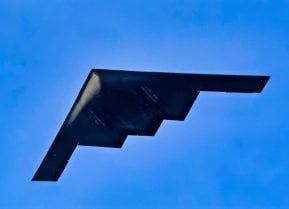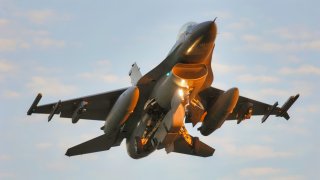Putin Will Freak Out: F-16 Fighter Jets Could Be in Ukraine By July
As Ukraine faces increased pressure from Russian forces, the arrival of F-16 Fighting Falcons offers a significant boost to Kyiv's air defense capabilities. While the process of training Ukrainian pilots on these modern aircraft has been expedited, challenges remain as they adapt to Western tactics and language requirements.
Summary: As Ukraine faces increased pressure from Russian forces, the arrival of F-16 Fighting Falcons offers a significant boost to Kyiv's air defense capabilities. While the process of training Ukrainian pilots on these modern aircraft has been expedited, challenges remain as they adapt to Western tactics and language requirements. Despite Russian efforts to downplay the impact of the F-16s, their deployment marks a strategic move by NATO allies to support Ukraine's defense. With the F-16's combat-proven track record and versatility, its integration into Ukraine's military arsenal could potentially shift the dynamics of the ongoing conflict.
Ukraine's F-16 Fighting Falcons: A New Front in the Conflict with Russia
The F-16 Fighting Falcon is already a combat-proven fighter, adopted by dozens of nations around the world. The first Fighting Falcons could also be in the skies over Ukraine as early as this summer, The New York Times reported on Monday.
A dozen pilots have been training on the U.S.-made aircraft in Denmark, the UK and the United States.
While 45 aircraft have been pledged to Kyiv, just six F-16s have been delivered. The additional jets can't come fast enough, as Ukraine is desperate for more weapons, as it runs low on artillery rounds and other ammunition while Republican lawmakers in Congress have held up additional U.S. military aid. The F-16s are expected to arrive in Ukraine armed with short- and medium-range missiles and bombs, partially making up for the shortage of ground-based munitions, the paper of record reported.
"This year, new fighter jets will be in our skies, and we have to make this year an effective one in defending ourselves against Russian guided bombs, Russian aircraft and their missiles," Ukrainian President Volodymyr Zelensky said earlier this month.
Expedited Training
The New York Times further noted that the training of Ukraine's pilots on the F-16 has proceeded at "lightning speed, compressing years of classroom learning, simulations and flight exercises into months."
Yet, the progress has been slower going than Kyiv or its allies had hoped – due to the fact that pilots trained on Soviet-era planes and tactics have had to get up to speed on the English language and Western military practices to make effective use of the Fighting Falcons.
The first Ukrainian pilots began training last August at Skrydstrup Air Base in southern Denmark, but their deficiencies in language skills and knowledge of Western flying techniques slowed the progress down considerably and it wasn't until this past January that the Ukrainian pilots were actually ready to fly.
F-16 Game Changer for Ukraine?
NATO member Denmark led the European effort last spring to provide Ukraine with F-16s. The F-16s were on the list of Western-made military hardware requested by Zelensky, along with tanks, air defense systems, and artillery.
The Biden administration only reluctantly gave in to Ukraine's demands, last summer by allowing NATO allies to provide the F-16s to Kyiv. Those jets were being phased out in some European militaries in favor of the newer F-35 Lightning II.
As the paper also reported, Denmark, the Netherlands, Norway, and Belgium committed to sending around a combined 45 of the jets to Ukraine, enough for three small squadrons. Denmark is on track to send the first six in the late spring, with 13 more due to arrive over the rest of the year and into 2025.
However, American officials have cautioned that the F-16 Fighting Falcon would not be decisive in the war and that the training would take a considerable amount of time. The latter fact has already been the case, but Ukraine has benefited from downing multiple Russian A-50 reconnaissance aircraft, which could make it harder for the Kremlin's forces to monitor the skies over Ukraine.
Russia Downplayed the Fighting Falcon
As previously reported, Russia has downplayed the threat of the F-16, and Russian President Vladimir Putin has even dismissed claims that the F-16s will be able to flip the course of the war in Ukraine.
Putin suggested the F-16s would be as easily destroyed as the German-made Leopard 2 main battle tanks (MBTs). Moscow has even warned that if the F-16 Fighting Falcons take off from the territory of NATO member countries and are used in the Ukrainian conflict, the Kremlin could regard this as a conscious step toward escalation and "de facto direct participation in the armed confrontation."
Since it first entered service in 1979, the Fighting Falcon has engaged in more than 400,000 combat sorties and has more than a combined 19 million flight hours. Moreover, the F-16 has been adapted to complete several missions, including air-to-air fighting, ground attack, and electronic warfare. It has proven to be highly maneuverable while its combat radius exceeds that of its potential threats.
The F-16 is no longer being acquired by the U.S. Air Force, but Lockheed Martin continues to build the F-16 for foreign customers around the world. It remains the world's most successful, combat-proven multi-role jet fighter ever produced.
Author Experience and Expertise: Peter Suciu
Peter Suciu is a Michigan-based writer. He has contributed to more than four dozen magazines, newspapers, and websites with over 3,200 published pieces over a twenty-year career in journalism. He regularly writes about military hardware, firearms history, cybersecurity, politics, and international affairs. Peter is also a Contributing Writer for Forbes and Clearance Jobs. You can follow him on Twitter: @PeterSuciu. You can email the author: [email protected].


